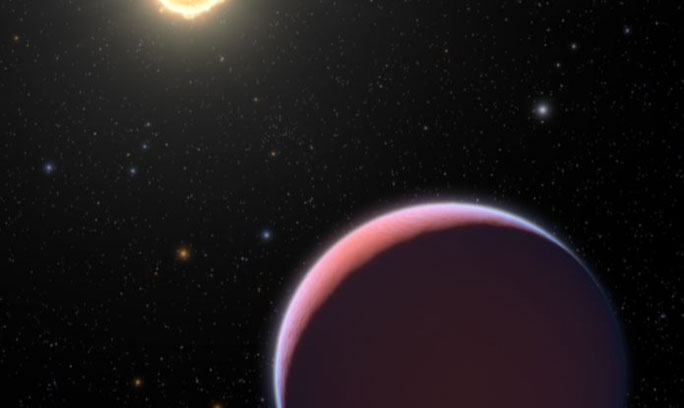Revealing a super strange planet, thought to only exist in myths
The planet currently holds the record for the largest and lightest ever found.
Located 1,232 light years from Earth, scientists call planet WASP-193b "one of the strangest things" in the universe. It is a world made almost entirely of clouds.
According to an international research team led by astronomer Khalid Barkaoui from the University of Liege (Belgium), WASP-193 can be imagined as a cloud ball or a giant cotton candy .
It is 50% larger in size than the largest planet in the Solar System, Jupiter, but its mass is only. 0.139 times greater.

Cotton candy planet WASP-193b - (Graphic image from NASA).
From the size of this planet, scientists deduce that its density is only 0.059 g/cm 3 , compared to Earth (5.51 g/cm 3 ), which is a hundred times lighter . The above figure is equivalent to 1/7 of Jupiter's mass. It must be added that Jupiter is 50 times larger than Earth, but its material density is only about 1% of Earth.
According to Science Alert, researchers concluded that it is actually a cloud planet , made almost entirely of clouds, possibly with a very small core in the middle.
Previously, some ultralight planets had been found, but that situation was only short-term, when its parent star was young and only a few tens of millions of years old, so it was too hot and caused the planet's atmosphere near it. swell up.
WASP-193b is close to its true parent star, a star similar to the Sun, with a size and temperature of approx. It orbits its parent star every 6.25 days, which is very close.
But the thing is, according to theories and models that have been practically proven by other inflated planets, after a few million to several tens of millions of years of inflation, this planet should have been completely stripped of its parent star. atmosphere and become a tiny rock.
The absurd thing is that the parent star WASP-193 of this "cotton candy planet" is 6 billion years old , which means the age of WASP-193b is approximately the same.
'WASP-193b is the second lowest density planet ever discovered, behind Kepler-51d, which is much smaller,' said Mr. Khalid Barkaoui. 'We cannot reproduce a gas giant with such a low material density in a simulation environment.'
Researchers believe that WASP-193b is made of hydrogen and helium similar to some other gas giant planets, but they are not sure why WASP-193b's size is so large.
It's a puzzle the team of scientists hasn't been able to solve yet, but they believe that when the world's most powerful James Webb space telescope focuses on WASP-139b, it will help provide more detailed data and bring The answer is expected.
Whatever the answer, this "cotton candy planet" is a unique and exciting discovery, revealing the incredible diversity of planetary worlds.
- Revealing the existence of the 9th planet in our Solar System
- Super-ionic ice is both black and hot: Strange state of water may exist in a planet's core
- 'Super Earth' may exist near the solar system
- Atmosphere on diamond planet
- 4 special wonders that everyone thought were fiction but turned out to exist really
- Revealing the 'paradox of the solar system' has a strange temperate planet
- The truth after each name of the familiar planets
- Discover the first 'super hot Neptune'
- Strange weather patterns on extraterrestrial planets
- Revealing secrets of snakes
- Discovered that 9 'super-Earths' can support life
- Our earth is a unique planet in the universe?
 Van Allen's belt and evidence that the Apollo 11 mission to the Moon was myth
Van Allen's belt and evidence that the Apollo 11 mission to the Moon was myth The levels of civilization in the universe (Kardashev scale)
The levels of civilization in the universe (Kardashev scale) Today Mars, the sun and the Earth are aligned
Today Mars, the sun and the Earth are aligned The Amazon owner announced a secret plan to build a space base for thousands of people
The Amazon owner announced a secret plan to build a space base for thousands of people